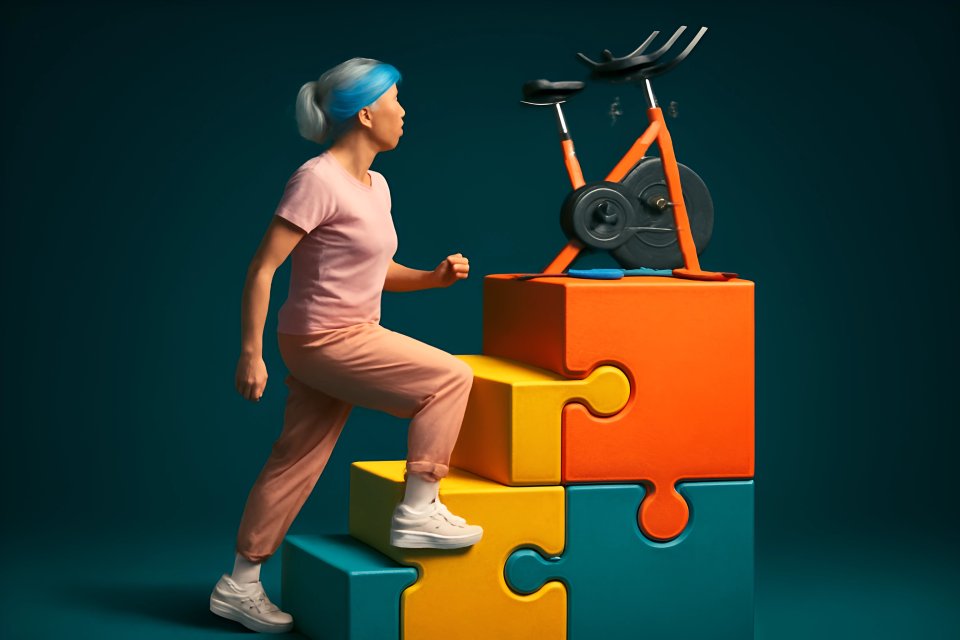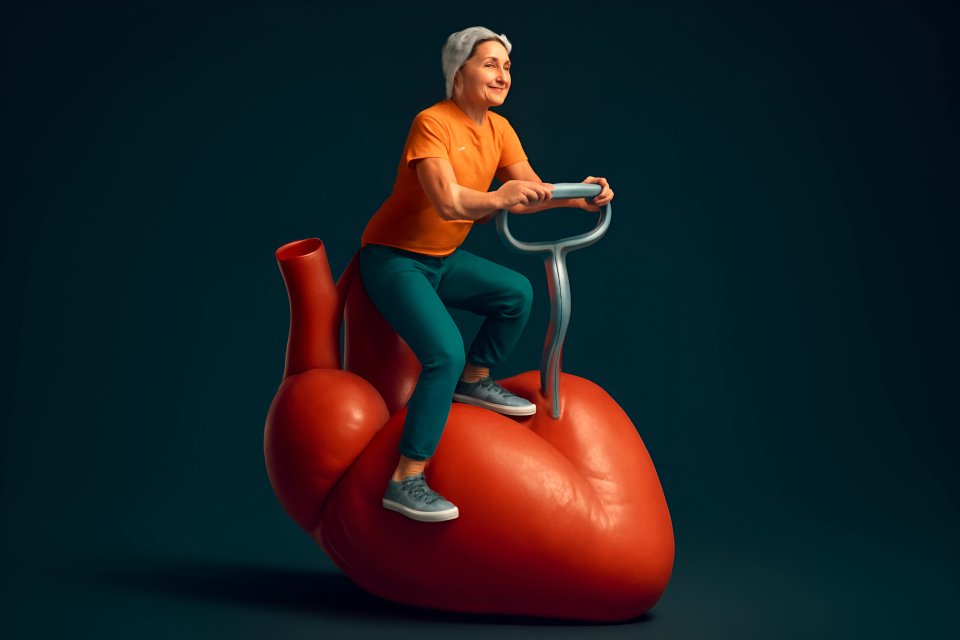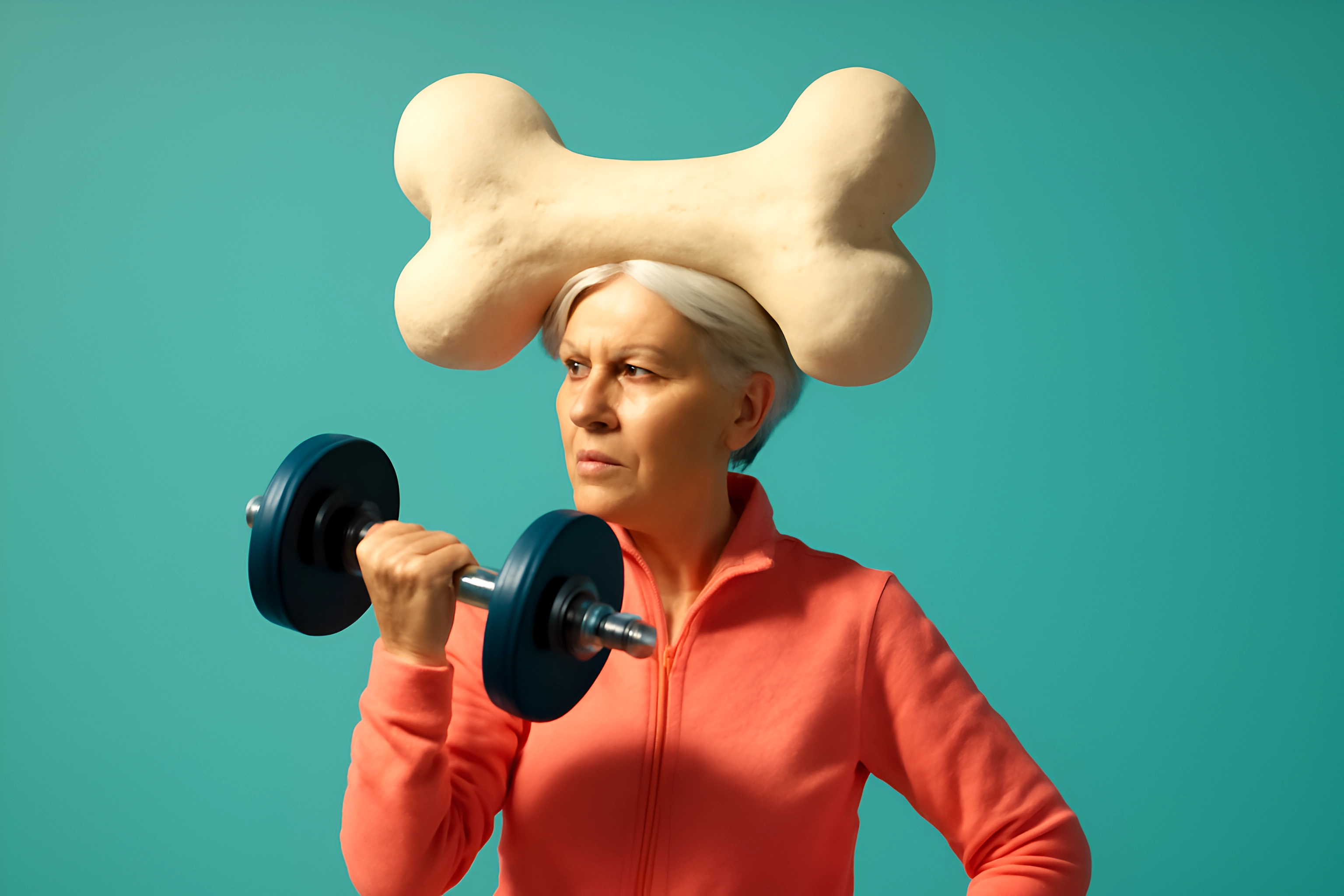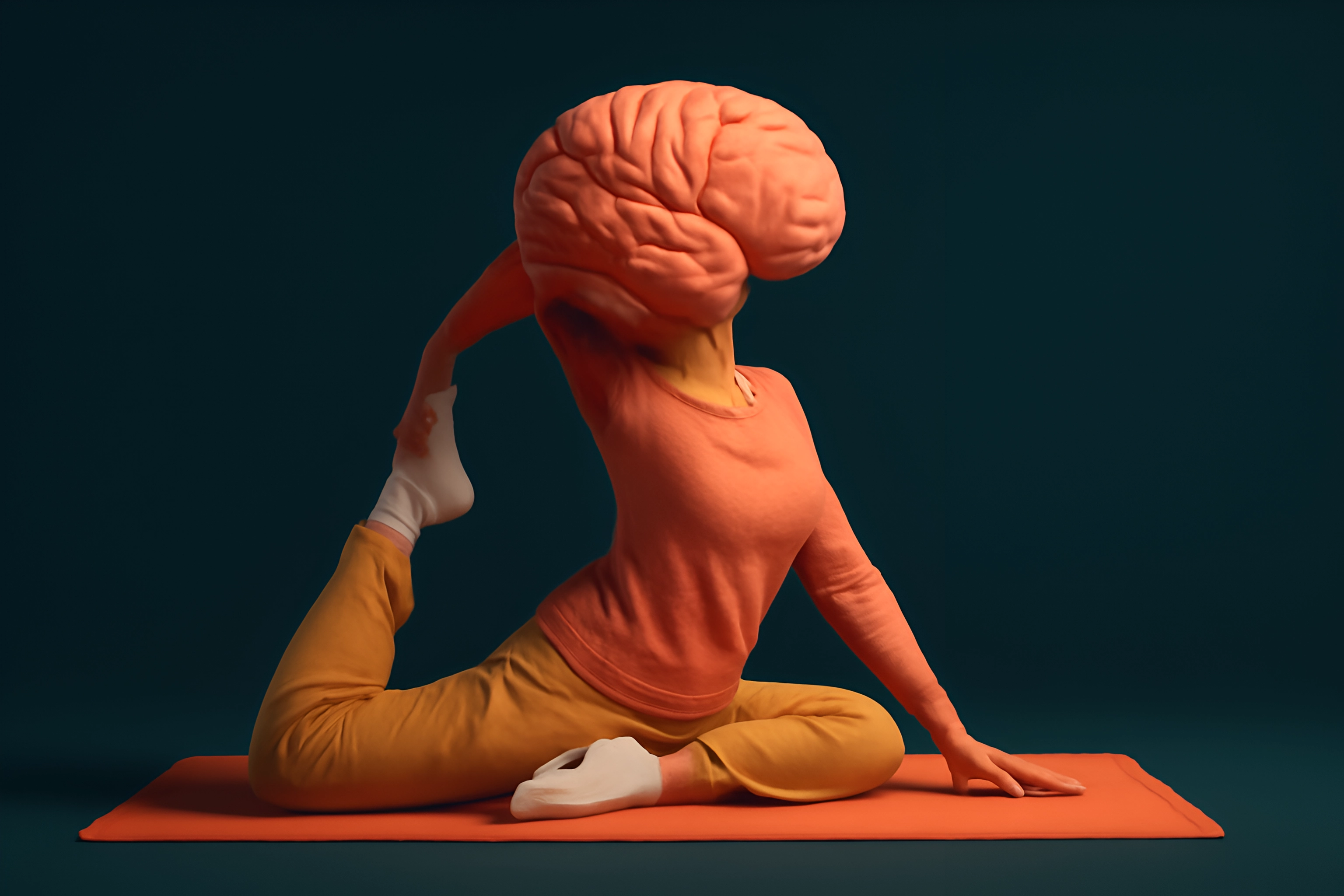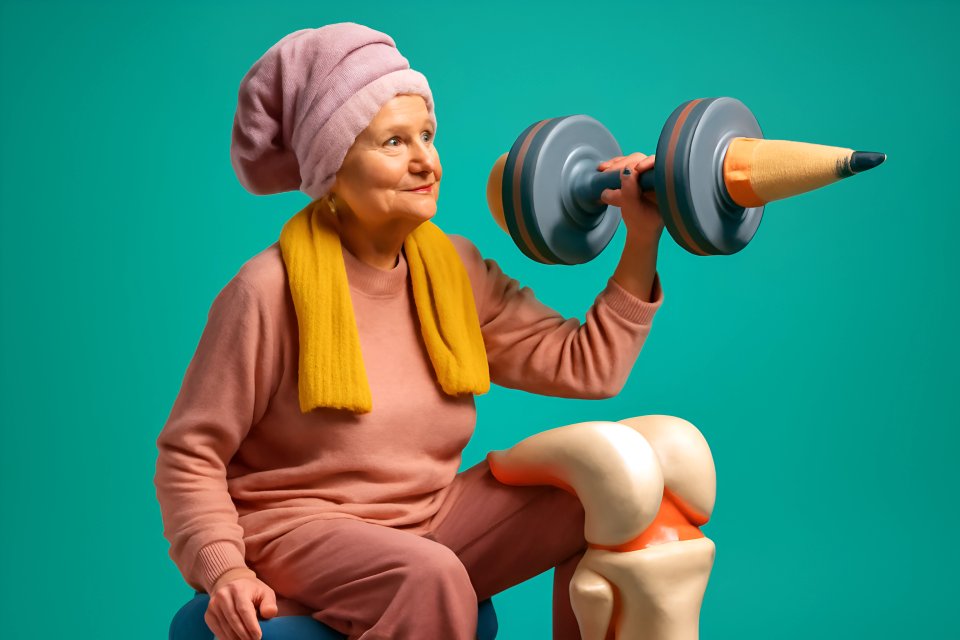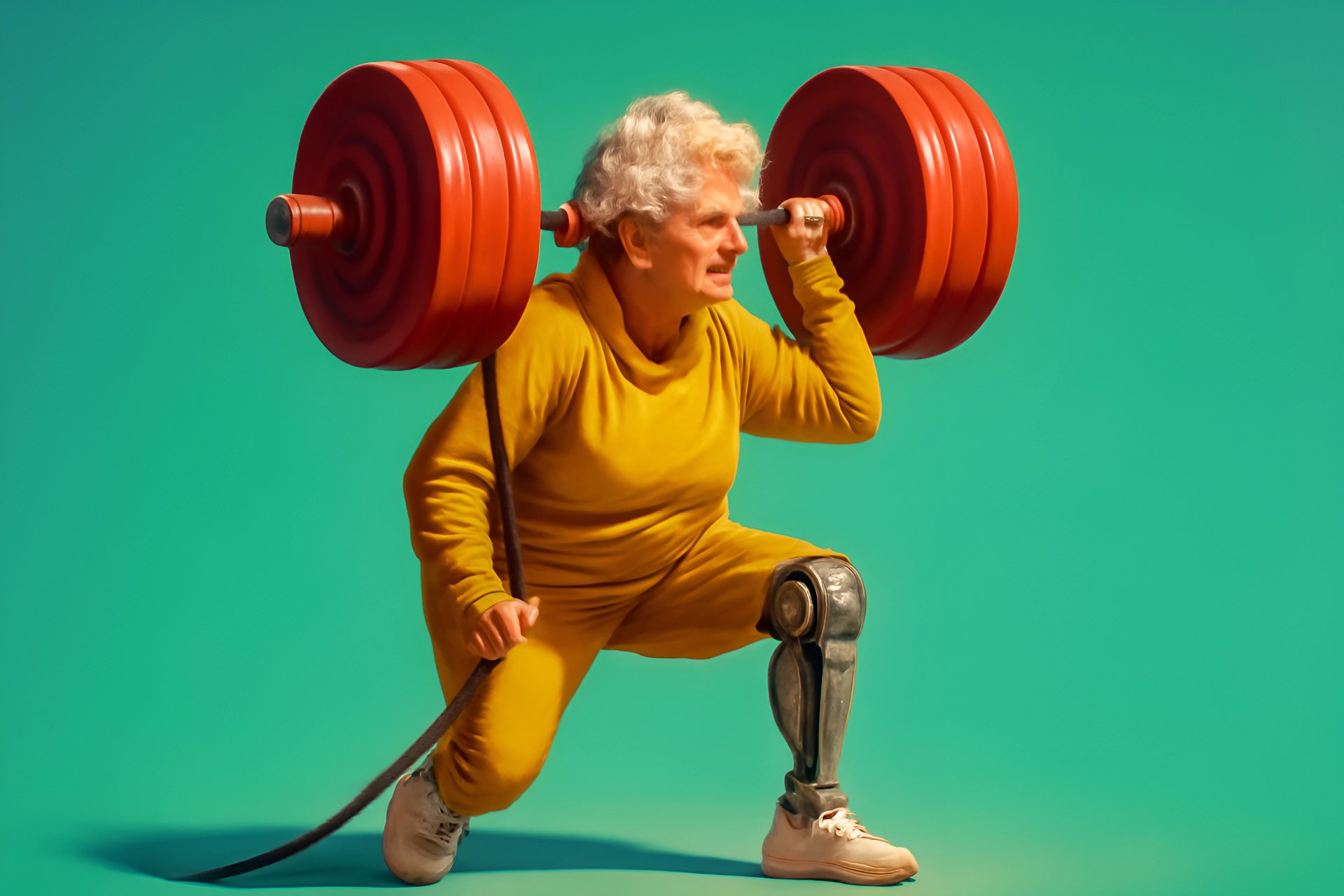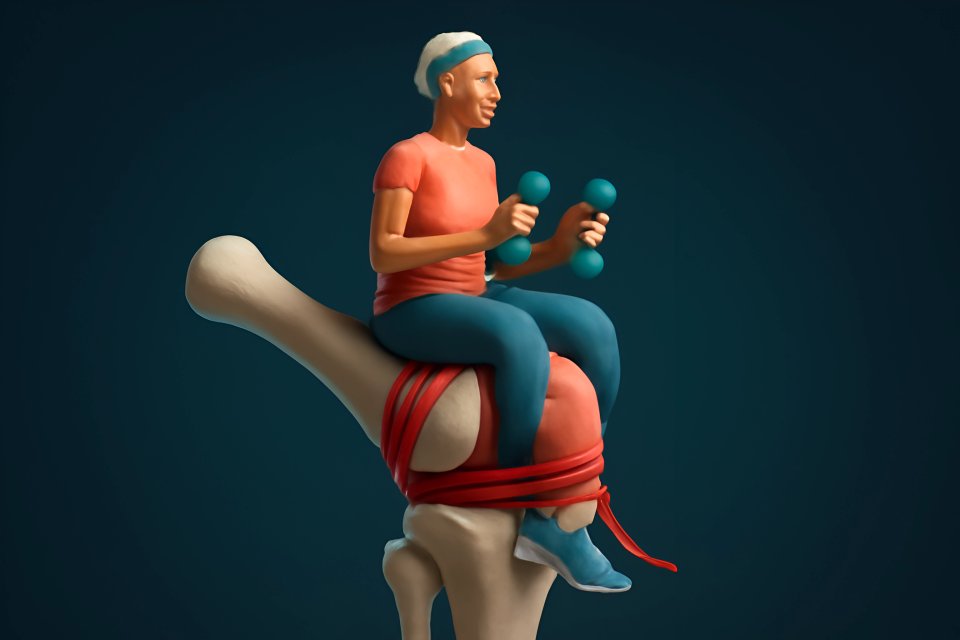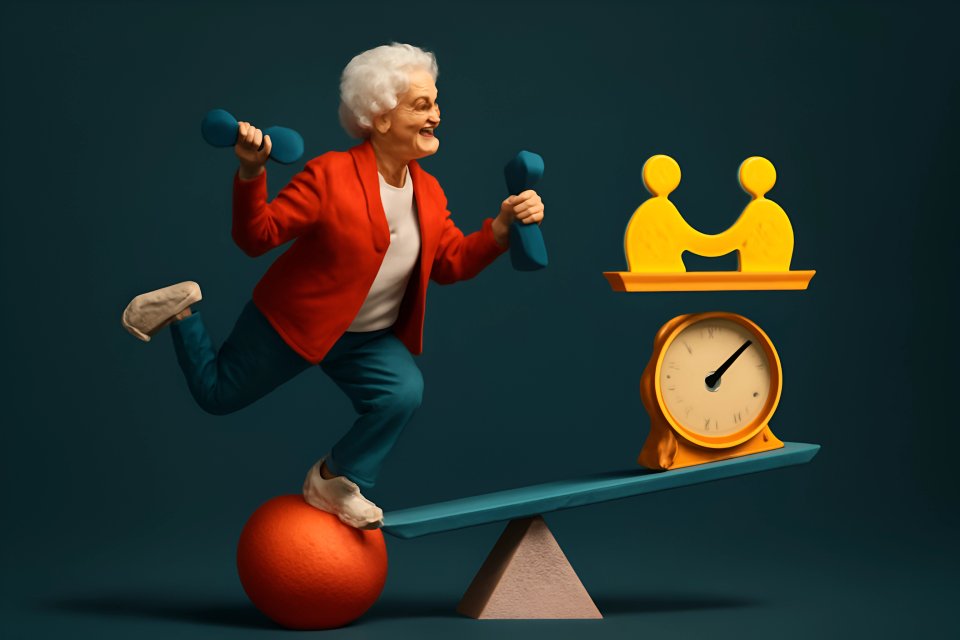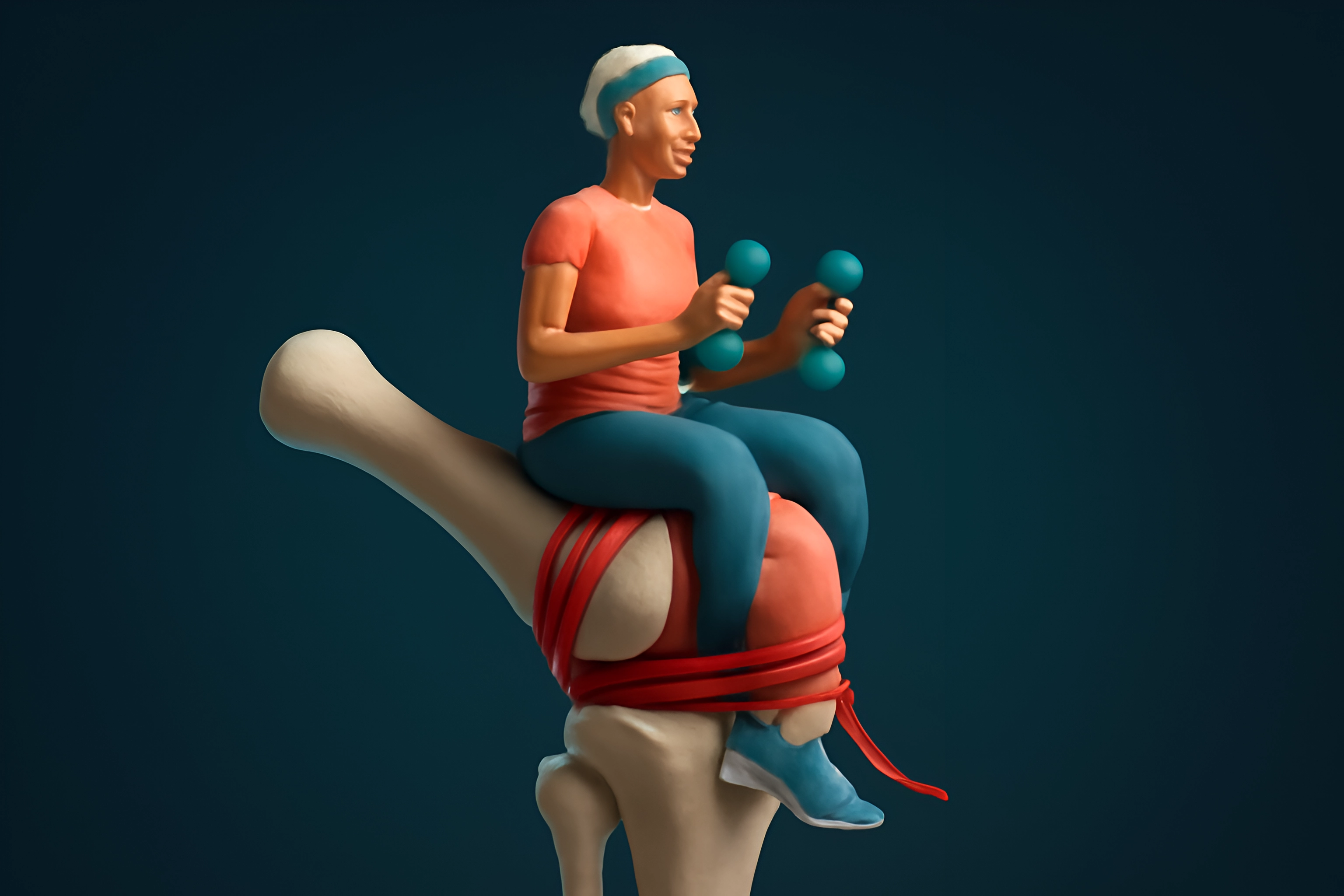
Introduction: Embrace Movement, Not Discomfort
Remember when you could jump out of bed without a single creak? While our bodies change after 50, staying active doesn't have to mean aching joints. In fact, the right kind of movement is the best medicine, your secret weapon for a life filled with vitality, not limitations.
Too many of us are held back by fear. The fear of a tweaked knee, a sore back, or worsening arthritis can be paralyzing, convincing us that the safest path is the one that leads to the recliner. But what if that belief is not only wrong but actively working against the vibrant, independent future you deserve?
This is your definitive joint-friendly exercise guide for seniors and anyone ready to reclaim their strength after 50. Forget the punishing workouts of your youth. We're going to show you how to build a powerful, resilient body with smart, safe, and effective strategies that protect your joints and build rock-solid bone health for decades to come.
Why Protecting Your Joints and Bones is Non-Negotiable After 50
Understanding Your Body's New Blueprint
Let's face it: the body you have today isn't the same one you had at 25. After 50, our internal architecture begins to change in significant ways. The smooth, slick cartilage that cushions our joints can become thinner and more brittle due to age-related changes in cartilage, making it less effective as a shock absorber.
At the same time, our bones are undergoing their own transformation. After menopause, some women can experience a rapid decline in bone density, with studies from Johns Hopkins Medicine showing they can be losing up to 20% of their bone mass in just 5 to 7 years. This is why conditions like osteopenia become so common, quietly reducing the structural integrity that keeps you strong and upright.
This isn't a story of doom and gloom; it's a call to action. Understanding this new blueprint is the first step toward taking control. It’s about working with your body, not against it, to build a foundation of strength that will support you for life.
The "Use It or Lose It" Principle for Joint Health
There's a dangerous myth that when joints start to ache, rest is the only answer. The truth is the exact opposite. Your joints crave movement, and denying them that movement is like denying a plant sunlight.
Think of it this way: exercise is lubrication. According to the Arthritis Foundation, movement lubricates your joints by stimulating the production of synovial fluid, the natural oil that keeps everything moving smoothly. Without it, friction and stiffness win the day.
Furthermore, exercise is the single most powerful signal you can send to your bones to stay strong. Research shows that resistance training boosts bone mineral density, effectively telling your skeleton to rebuild and reinforce itself. This isn't just about fitness; it's about securing your independence and ensuring you have the physical freedom to live life on your own terms.
The Golden Rules: Principles of Joint-Friendly Fitness
Low-Impact is Your Best Friend
What if you could get a fantastic workout without the bone-jarring impact? That's the promise of low-impact exercise. Unlike high-impact activities like running or jumping, where high-impact exercises can generate jarring forces of two to three times your body weight, low-impact movement keeps at least one foot on the ground at all times.
This simple principle is a game-changer for joint preservation. It allows you to elevate your heart rate, build endurance, and burn calories without putting your knees, hips, and spine through a punishing ordeal. It’s the key to consistency, because when exercise feels good, you’re more likely to stick with it.
Embracing low-impact exercise routines for seniors is about playing the long game. It’s a strategic choice to protect your assets while still reaping all the rewards of an active lifestyle. For a complete playbook on this approach, consider mastering sustainable low-impact workouts to ensure your routine is built to last.
Form Over Everything
Listen closely: the quality of your movement is infinitely more important than the quantity. It doesn't matter how much weight you lift or how many reps you do if your form is sloppy. Bad form is a direct flight to injury, placing stress on the exact joints you’re trying to protect.
Proper form ensures that the right muscles are doing the work, acting as a strong support system for your skeletal structure. Think of your muscles as the personal bodyguards for your joints. When they are strong and activated correctly, they absorb impact and stabilize movement, taking the pressure off of delicate cartilage and ligaments.
This is why it's crucial to start light, move slowly, and focus on the mind-muscle connection. If you have existing pain, learning practical strength training modifications for joint pain is not a sign of weakness, but a mark of wisdom. It’s about making the exercise fit your body, not forcing your body to fit the exercise.
Listen to Your Body's Wisdom
Your body is constantly sending you signals. The secret is learning to speak its language. There is a profound difference between the satisfying burn of a working muscle and the sharp, nagging pain of a strained joint.
The "good burn" is a sign of progress; it means you're challenging your muscles to adapt and grow stronger. This discomfort is temporary and feels spread out across a muscle belly. In contrast, joint pain is often sharp, localized, and a clear stop sign. The Mayo Clinic advises that learning to distinguish between muscle fatigue and joint pain is a critical skill for safe exercise.
Become the world's leading expert on you. Pay attention to how you feel during and after a workout. If an exercise causes joint pain, stop. There is always a modification or an alternative that can help you achieve your goals without sacrificing your well-being.
The Best Exercises for Joint Protection and Bone Health
Category 1: Low-Impact Cardiovascular Exercise
Getting your heart pumping is essential for overall health, and you don't need to pound the pavement to do it. The king of joint-friendly cardio is swimming or water aerobics. Thanks to water's natural buoyancy, you become virtually weightless, allowing for a challenging workout with zero impact.
On dry land, cycling offers a smooth, circular motion that builds leg strength and endurance without stressing the knees. Whether on a stationary bike or outdoors, it's a fantastic way to get your cardio in. Likewise, the elliptical trainer mimics the motion of running but keeps your feet planted, slashing the impact and protecting your joints.
And never underestimate the power of a simple, brisk walk. It's accessible, effective, and a weight-bearing activity that helps stimulate bone growth. If you're looking for more ways to get your heart rate up safely, you can explore more low-impact cardio ideas designed specifically for the 50+ body.
Category 2: Strength Training for Bone and Joint Support
Strong muscles are the armor that protects your joints. This is why bone health workouts for over 50 are not just an option; they are a necessity. The best part? You don't need a gym full of heavy equipment to build formidable strength.
Bodyweight exercises are your foundation. Movements like glute bridges (to support your lower back and hips), wall push-ups (to build upper body strength safely), and controlled bodyweight squats are incredibly effective. The focus is always on slow, deliberate movement through a full, pain-free range of motion.
Resistance bands are another superstar tool. They provide gentle, consistent tension that builds muscle and stabilizes joints without the sudden load of free weights. Light dumbbell work, focusing on seated or supported exercises, allows you to isolate muscle groups and build strength with maximum control and minimal risk.
Category 3: Flexibility, Mobility, and Balance
Strength is only one piece of the puzzle. To move with grace and confidence, you also need flexibility, mobility, and balance. These three elements work together to improve your range of motion, reduce stiffness, and dramatically lower your risk of falls.
Gentle daily stretching of major muscle groups like the hamstrings, quads, and chest can relieve tension and improve posture. For a more integrated approach, practices like Yoga and Tai Chi are unparalleled. In fact, the National Institutes of Health notes that Tai Chi is proven to reduce fall risk by improving balance and body awareness.
Incorporate simple mobility drills into your daily routine. Gentle ankle circles while you're sitting, hip circles while waiting for your coffee to brew, or a few cat-cow poses in the morning can make a world of difference. It’s these small, consistent efforts that keep you fluid and agile.
How to Build Your Perfect Joint-Friendly Routine
The Non-Negotiable Warm-Up (5-10 minutes)
Think of a warm-up as a conversation with your body. You're gently telling it, "Hey, we're about to move." Jumping into a workout with "cold" muscles and joints is a recipe for strain and injury.
Your goal is to increase blood flow and gently lubricate the joints. Start with a few minutes of light, rhythmic movement like marching in place or pedaling slowly on a stationary bike. This gets the heart rate up gradually.
Follow that with dynamic stretches—that means movement-based, not static holds. Gentle leg swings, arm circles, and torso twists prepare your body for the specific range of motion it will use during your workout. This five-minute investment pays huge dividends in safety and performance.
The Essential Cool-Down & Recovery (5-10 minutes)
Just as you ease into a workout, you must ease out of it. A cool-down is your body's transition back to a state of rest. Abruptly stopping can cause blood to pool in your extremities, leading to dizziness.
Gradually lower your intensity for the last few minutes of your workout. Then, move into static stretching, holding each stretch for 30 seconds without bouncing. This is the ideal time to improve flexibility, as your muscles are warm and pliable.
Recovery is just as important as the workout itself. This includes rehydrating, eating a protein-rich snack to help repair muscle tissue, and getting adequate sleep. This is how you build resilience, not just for your next workout, but for life.
Sample Weekly Schedule for Beginners
Getting started can feel overwhelming, so here is a simple template to show you how it all fits together. Remember, this is a starting point. The ultimate goal is to listen to your body and build your own personalized low-impact exercise routine that you enjoy and can stick with.
| Day | Activity | Duration | Focus |
|---|---|---|---|
| Monday | 30 min Brisk Walk + Cool-down | 30 min | Cardio & Bone Density |
| Tuesday | 20 min Strength Training (Full Body) + Cool-down | 20 min | Muscle & Joint Support |
| Wednesday | Active Recovery (Gentle Stretching or Yoga) | 20 min | Flexibility & Mobility |
| Thursday | 30 min Swimming or Cycling + Cool-down | 30 min | Low-Impact Cardio |
| Friday | 20 min Strength Training (Full Body) + Cool-down | 20 min | Muscle & Joint Support |
| Saturday | Active Rest (Leisurely walk, gardening) | Variable | Light Movement & Enjoyment |
| Sunday | Full Rest & Recovery | — | Rest & Repair |
Common Mistakes to Avoid When Exercising Over 50
- Mistake #1: Doing Too Much, Too Soon. The "weekend warrior" mentality is your enemy. Your body needs time to adapt. A sudden spike in intensity or duration is a fast track to burnout and injury. Progress should be gradual and patient.
- Mistake #2: Ignoring Pain. We've said it before, and we'll say it again: pain is a signal, not a challenge. Pushing through sharp, localized joint pain will only lead to more significant problems down the road. Respect the signal and modify or stop the activity.
- Mistake #3: Skipping the Warm-Up or Cool-Down. These aren't optional bookends to your workout; they are integral parts of it. Skipping them is like driving a car in winter without letting the engine warm up first—you can do it, but you're causing damage over time.
- Mistake #4: Forgetting About Balance and Flexibility. Many people focus solely on cardio and strength, but without balance and flexibility, you're building a powerful engine on a rickety frame. These components are essential for preventing falls and maintaining a functional, pain-free range of motion for daily life.
Conclusion: Your Journey to Stronger, Happier Joints Starts Now
This guide is proof that you hold the power to redefine what it means to age. It's not about succumbing to aches and pains; it's about rising to the occasion with intelligence, strategy, and a commitment to your own well-being. By embracing consistency, prioritizing proper form, and learning to listen to your body's wisdom, you can build a future of strength and vitality.
This isn't about limitations; it's about smart, sustainable fitness that will carry you through your best decades yet. The journey to stronger, happier joints doesn't start tomorrow or next week. It starts right now, with your very next choice.
What is your favorite joint-friendly exercise? Share your tips and successes in the comments below to inspire the FitOverFifty community!
For more expert-backed fitness plans and wellness tips delivered straight to your inbox, sign up for the FitOverFifty newsletter.







